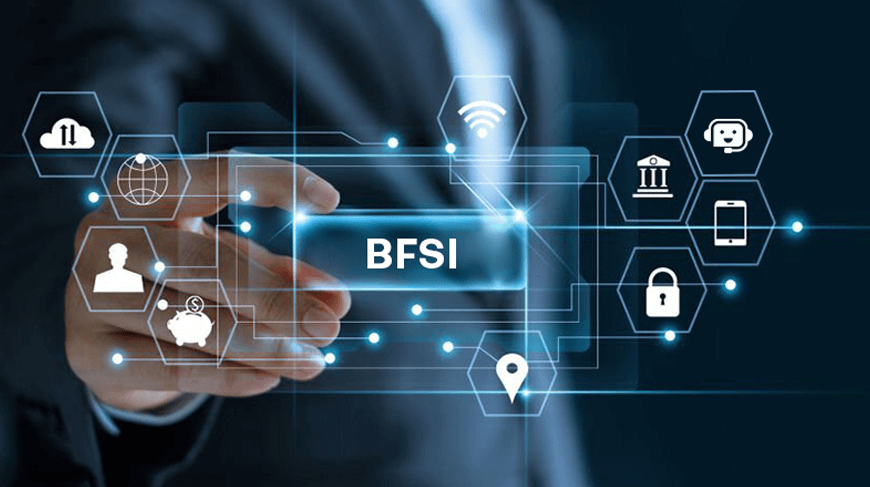In the current rapidly changing digital environment, the financial sector is on the verge of a revolutionary period, driven by the integration of cloud technology. As around 80% of financial enterprises are either embracing or transitioning to cloud services, it is evident that this change is not merely a passing fad but a pivotal transformation in the operations and advancements of financial institutions. [Source: Gartner]
There are many advantages in cloud services, but it is important to understand the areas necessary to ensure strong security. Although worrisome, data breaches have forced organizations around the world to strengthen their security foundations and protect sensitive information. For example, statistics show that 59% of financial organizations have implemented better security measures to prevent breaches and maintain confidence in their operations.
To effectively address these challenges, financial institutions must be able to address cloud security. This includes implementing a comprehensive set of cloud best practices to reduce risk, protect sensitive data, and maintain customer trust.
Governance and Access Control
One of the cornerstone elements of cloud security is comprehensive governance and access management. Through IAM (Identity and Access Management) capabilities, businesses can limit access to data to the least possible level and deploy MFA (Multi-Factor Authentication) thus, lowering the chance of unauthorized access. Also, AWS organizations offer a hierarchy for managing different AWS accounts by creating a structure that results in an easier way of implementing policies and governance. Organizations can now accomplish this security goal through the AWS Security Hub as it provides them with centralized visibility into their security posture, which enables them to detect and address the possible vulnerabilities in their systems in real-time.
Data Security and Encryption
Of course, it is crucial to ensure data confidentiality in the present age of digital technology. By leveraging the encryption by default feature, organizations can prevent information from being read if stored or transmitted without using keys, which are managed by AWS Key Management Service (KMS). AWS CloudTrail and Amazon CloudWatch provide wide logging and monitoring capabilities to organizations to track all API calls and changes in resources for compliance and auditing. Besides, Amazon Macie enables data automation, discovery and classification to find and protect sensitive data in the AWS environment.
Threat Detection and Monitoring
Today, continuous threat detection and monitoring are essential security components as they contribute to a robust security strategy. AWS GuardDuty employs Machine Learning (ML) and anomaly detection algorithms that spot unauthorized behavior within the AWS ecosystem thus giving organizations a chance to take immedate action in the event of a threat. Amazon Inspector facilitates automated security assessments of EC2 instances and container images, enabling organizations to detect vulnerabilities and promptly correct them before hackers can exploit them. Furthermore, AWS Web Application Firewall (WAF) shields web applications from common attacks including SQL injection and cross-site scripting.
WAF is an AWS Web Application Firewall that utilizes scrutinization of the incoming traffic to the web applications and blocking of patterns that are indicative of SQL injection or XSS attempts. With the rules and policies being configured, the WAF can offer comprehensive protection for the malicious traffic by filtering them out ahead of the application and thus save the application from leakage of sensitive data as well as maintain the security of the web infrastructure.
Additional Best Practices
Besides the fundamental concepts previously discussed, some other best practices that an organization can adopt to strengthen the security of its cloud services include the following:
Organizations that adopt DevSecOps principles can include security in all phases of the Software Development Lifecycle. These phases range from the code creation stage to deployment and operations. With the sole purpose of finding and fixing security flaws on time, organizations should schedule penetration testing, conducted by experienced and well-trained security personnel. AWS Config, on the other hand, offers continuous monitoring and validation of AWS resource configurations by making sure that the settings comply with the industry standards and regulatory needs. As a last measure, compliance with PCI DSS being observed for businesses dealing with credit card data is imperative. This is done by utilizing AWS services and tools that support compliance.
Secure Configuration Management: Adopt secure configuration management procedures to set up cloud services and resources in line with the industry best practices and security standards. Implement AWS Config and Azure Security Center to have visibility into and the capability to enforce conformance with security configurations.
Network Segmentation and Micro-Segmentation: Implement network segmentation and micro-segmentation in cloud environments to prevent lateral spreading threats in between the networks. Through splintering networks into smaller bits, businesses can manage the growth of security holes and the magnitude of cyber-attacks.
Conclusion
At last, we come to the conclusion that cloud security can hardly be considered just a need but rather a strategic must for any financial institution that is active in the online market. A thorough focus on cloud security with a proactive risk management strategy will effectively help organizations to prevent security threats, protect the customer data and keep the consumer trust alive.
At Noventiq, we understand the importance of protecting financial data in the cloud. With our years of expertise, we can help businesses develop customized security solutions that meet regulatory standards and overcome specific challenges in the financial industry.
Partnering with us gives you access to the expertise, tools and resources you need to navigate the cloud with confidence and achieve your business financial goals.
Contact us today to discuss how we can help you unlock the full potential of the cloud and start your successful digital transformation journey.







